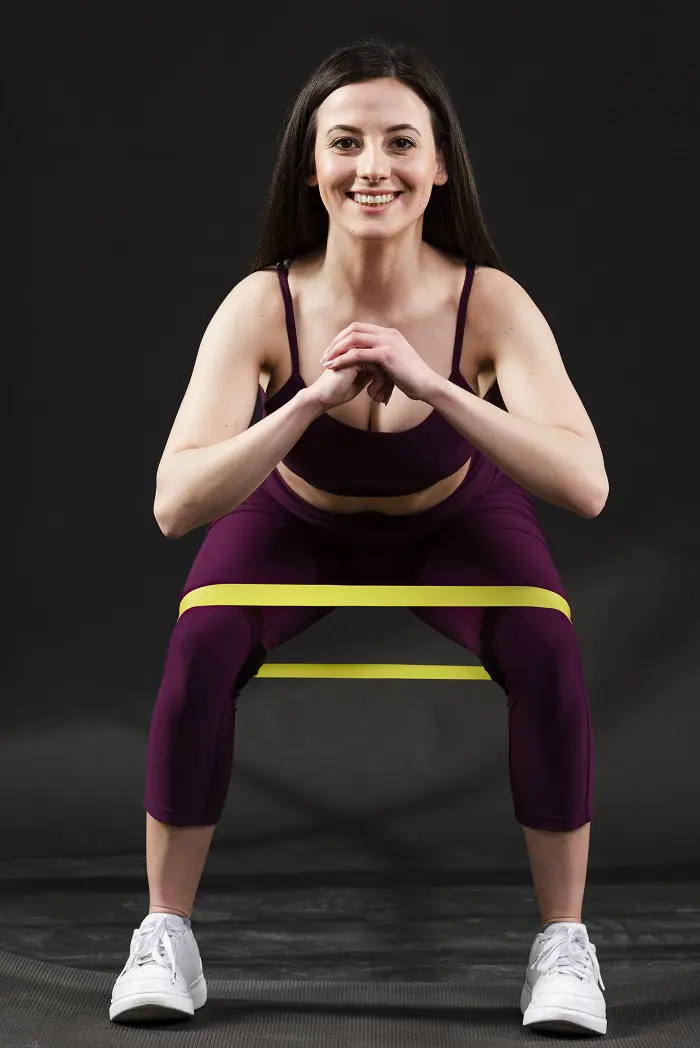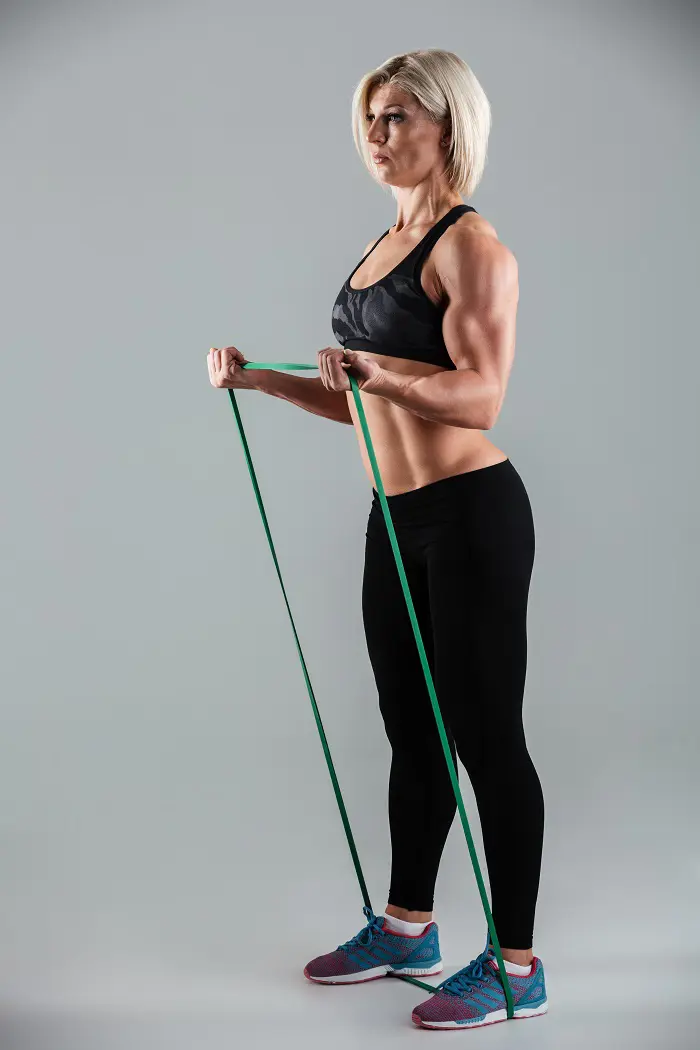10 Exercise For Sciatica To Relieve Lower Body Pain

Sciatica is a health condition characterized by the inflammation of the sciatic nerve. Although the pain and numbness in the nerve may become unbearable, there are many gentle stretches and exercises to relax your body.
Here is the list of top 10 exercises for sciatica pain relief you can practice at home:
1. Knee To Chest Stretch
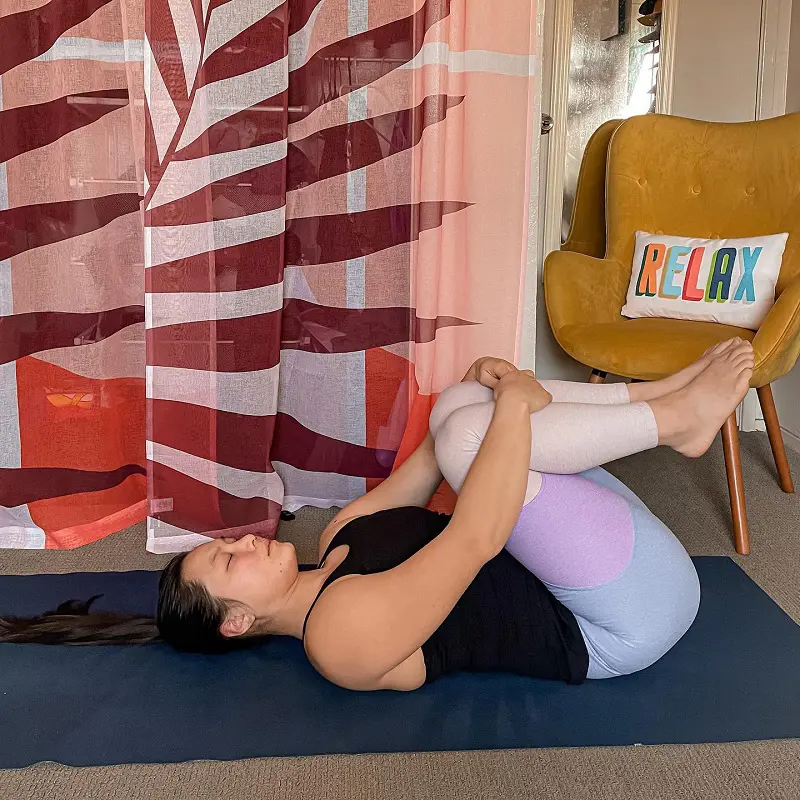
First on the list is "knee to chest stretch", one of the best exercises to relieve sciatica. This stretch engages the lumbar region and helps improve lower back circulation.
How To Do:
- Lie comfortably on a floor mat, bending one knee and keeping the other feet flat.
- Bring both knees towards the chest slowly. You can also employ hands to press them forward.
- Keep the back straight during the stretching. The hips should be slightly elevated.
- Lower the legs after stretching for 20-30 seconds.
2. Standing Hamstring Stretch

A tight hamstring is one of the primary causes of sciatica. So, this simple stretch features gentle moves to soothe tightness and lower sciatic pain.
How To Do:
- Stand tall with your back straight. You can take the support of a chair to perform the stretch.
- Put one leg atop the chair. The leg should be straightened with the toes pointed upwards.
- Now, it is essential to lean forward slowly and steadily. Remember to keep the back straight.
- Remain in this stretched position for around 30 seconds.
- Lower the foot down and repeat with the other foot.
3. Cobra Stretch
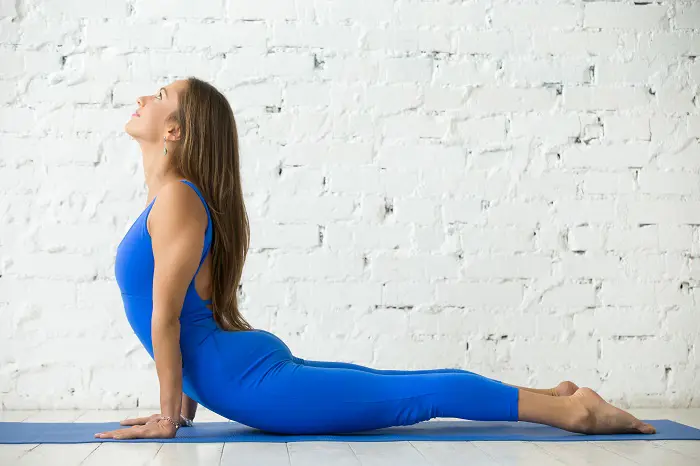
Be gentle when stretching the back muscles with this exercise. Overstretching could lead to more lower back pain or worse.
How To Do:
- First of all, lie face down on the floor. Keep the back straight.
- With the palm pressing against the floor, push the chest upwards.
- Gently reach up as high as possible and feel that stretch for 20-30 seconds.
- After that, come back down by breathing deeply.
4. Pelvic Tilt Stretch
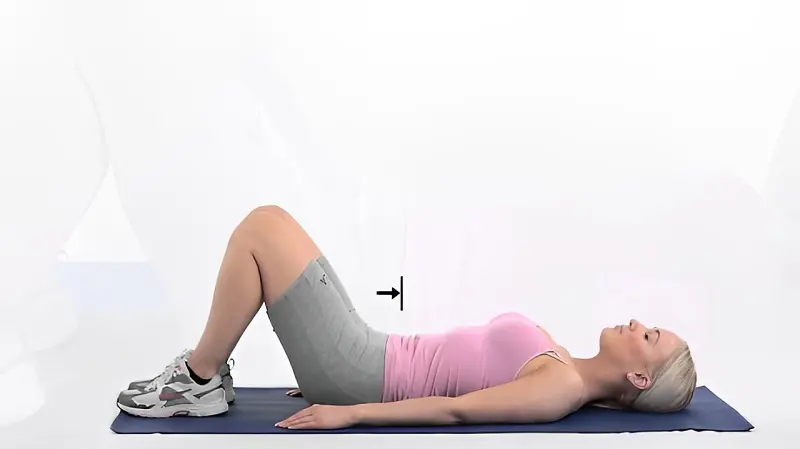
Pelvic Tilt is good for sciatic pain as it improves spinal alignment and empowers our core muscles.
How To Do:
- Start by lying down on the floor mat on your back.
- Bend the knees and place the arms by the sides.
- Now, press the back into the floor, tighten the core muscles, and lift the hips forward.
- Hold this position for around 30 seconds.
5. Glute Bridge
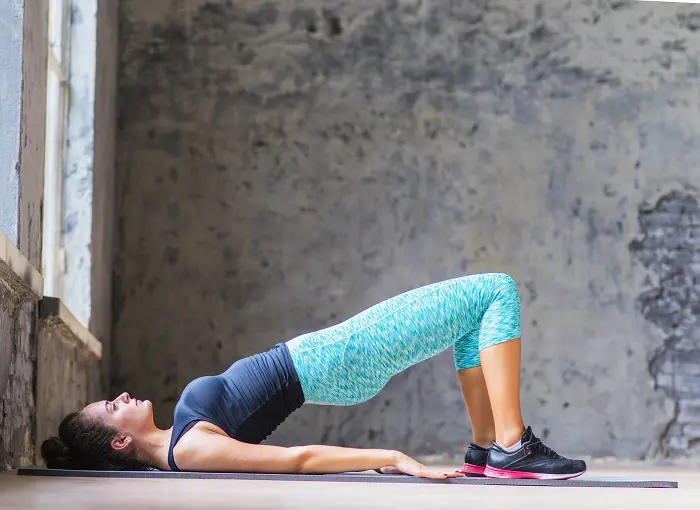
The Glute Bridge stretch relieves the tingling sensation by targeting the hips, hamstrings, and lower back muscles.
How To Do:
- Go down on the mat of the floor, bending the knees.
- Lift the hips and lower back by pushing through the heels of the foot.
- After forming a parallel line from knees to shoulders, hold the position.
- Remain still for 30-45 seconds and then come back down.
6. Clamshell Stretch

Clamshells are your secret weapon to tackle sciatic pain. This gentle stretch reduces nerve pressure by working the hips and lower back.
How To Do:
- First, it is crucial to lie down on one side.
- The knees should be bent, with one stacking atop another.
- Then, raise the top leg while keeping the knees bent. The form should look like the opening of a clamshell.
- Remain in this position for a minute before lowering the top leg.
7. Child's Pose

It mimics a kid’s position when they are in their mother’s womb. Aka Balasana, this stretch is relaxing and soothes the sciatic numbness.
How To Do:
- Sit down on all fours with bent knees.
- Slowly sink your hips down toward your feet. This will lower your upper body too.
- Touch the forehead on the ground. Meanwhile, the hands should be straight and outstretched during the process
- Remain in this stretched pose for 30-40 seconds.
8. Cat-Cow Stretch
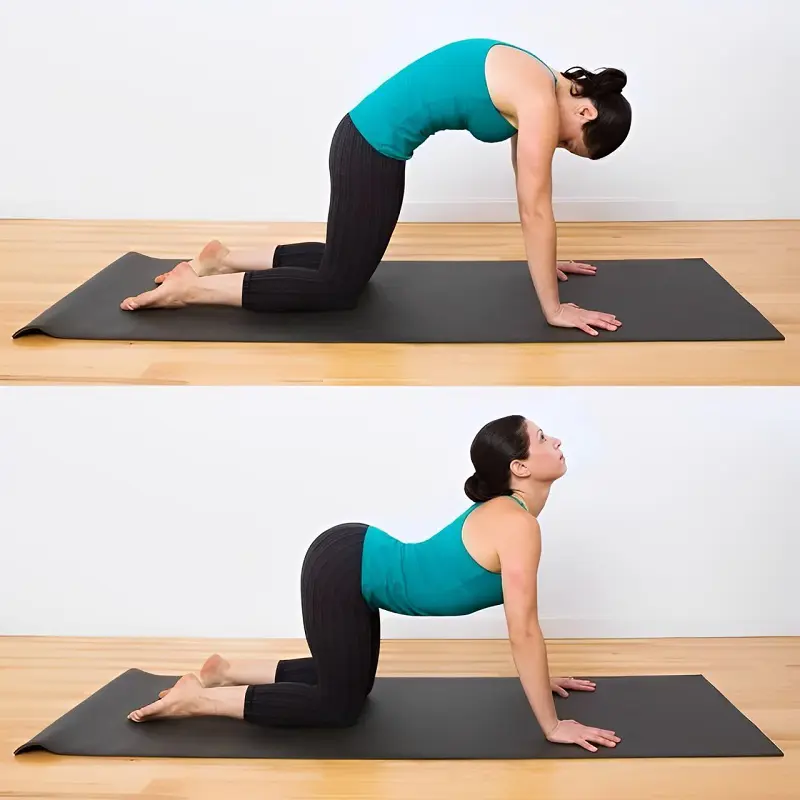
This wonderful stretch for sciatica encompasses two major positions, with one resembling a cow while the other mirrors a cat.
How To Do:
- Start on all fours like the child’s pose. The knees must be placed directly under the hips.
- While keeping the back straight and core engaged, start to inhale deeply.
- When inhaling, lift the head and tailbone upwards. Then, arch the spine down and bring the pelvis tips forward. This is the cow position.
- When exhaling, arch the spine upwards, bring the pelvis tips back, and tuck the chin downwards. This is the cat position.
- Interchange the cat and cow poses with each breath for 15-20 minutes.
9. Bird Dog
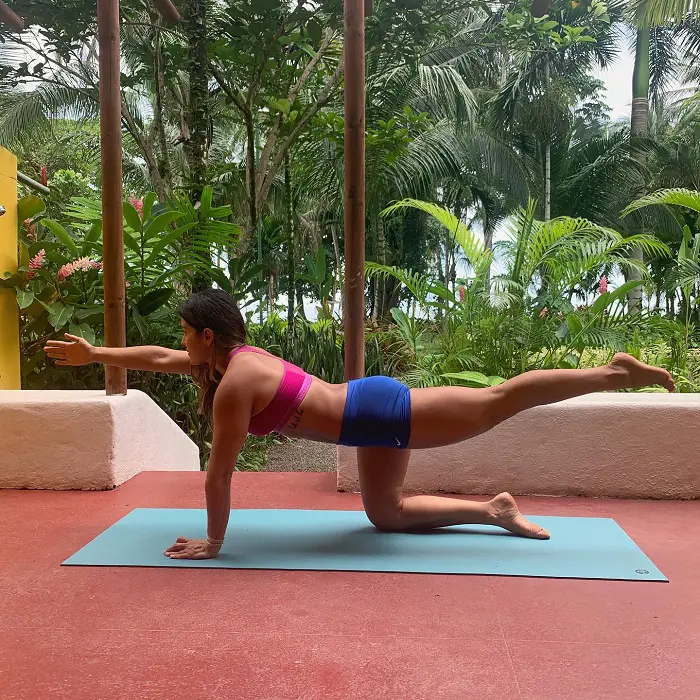
This gentle stretch is derived from the pointing position of trained hunting dogs. One arm and the opposite leg are extended for a full body stretching.
How To Do:
- Sit down on all fours, with the knees under hips, and arms under shoulders.
- Keeping the core engaged, lift the right arm straight ahead. At the same time, lift the left leg straight back.
- The leg, arm, and back should be in a straight line.
- Hold the stretch for a minute. Then lower the arm and leg down.
- Repeat the process for the left arm and right leg.
10. Figure 4 Stretch
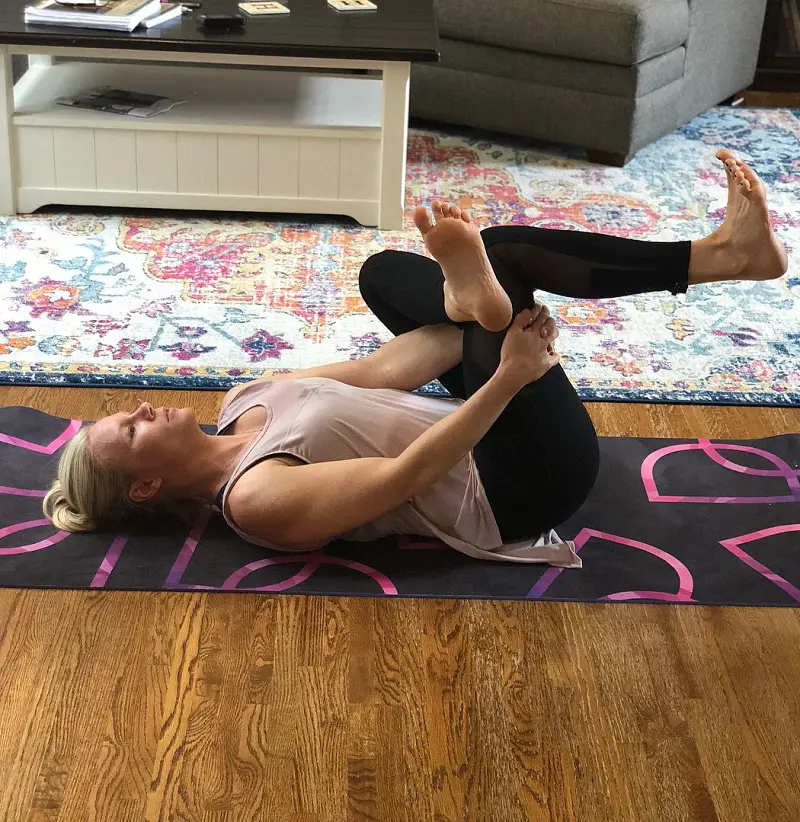
A gentle exercise that opens your hips, the Figure 4 stretch is great for sciatic pain relief. It also reduces tightness in the lower back region.
How To Do:
- Start by lying down on the floor with bent knees.
- Then, cross the right foot over the left thigh.
- Place both the hands on left thigh and press the legs towards the chest.
- Hold this stretch for about 20-30 seconds.
Sciatica Stretches To Avoid
Although gentle stretches might be an answer to soothe sciatic pain, some workouts may not be suitable for us.
Here are some exercises that every patient needs to avoid:
- Burpees
- Weighted squats
- Forward bends
- Deadlift
- Double leg lifts
- Bent-over rows
- Russian Twists
- Hurdler stretch
- Sit Ups
- Running
- Jumping
- Leg circles
Safety Tips And Precautions
During sciatica conditions, it is very important to perform the exercises with gentle and controlled motions. Fast-paced movements, excessive jumping, and running can actually worsen the sciatic nerve's inflammation.
Here are some safety tips to make your exercise sessions more worthwhile:
1. Perform Warmups
It is crucial to first heat up your body before jumping into workout sessions. Warm up exercises can help loosen and contract the tight muscles, resulting in a better workout performance and less chances of muscle strain.
2. Understand Your Body's Limit
If you happen to come across some sharp pain while exercising, don't try to ignore it. Your body may be at your full limit. Moreover, the presence of sciatica only makes ignoring the pain worse.
3. Avoid Overstretching
Whenever you are stretching the muscles of the lower back, hamstrings, core, or glutes, do not overstretch them. People might increase the intensity or get too comfortable, which will only result in disasters like muscle tears, strain, or internal bleeding.
What Causes Sciatica?
Sciatica occurs after the nerve roots of sciatic nerve become pinched due to external pressure.
Various causes of sciatica are linked with other health conditions. For instance, people with herniated discs, osteoarthritis, and pregnancy can suffer from this problem.
When To Visit A Doctor?
People with sciatica have to be very careful when performing the exercises mentioned above. Gentle movements are crucial for successfully relieving pain without causing worse situations.
However, sometimes, unintentionally, there could be problems while doing these exercises. Here are some situations that immediately warrant a doctor’s visit:
- Pain becomes even worse - You are practicing these gentle stretches to relieve sciatic pain. However, if the pain only increases, it is time to halt the workout and go to a doctor.
- Muscle weakness - While doing the exercises, if you feel weakness in any muscle group, stop and consult a health professional immediately.
- Loss of Bladder / Bowel Control - Sometimes, people can face an unexpected situation, i.e. loss of bowel or bladder movements during or post-workout. If this occurs in you, visit a doctor for medical treatment.
- Numbness in the lower body - You can start feeling numb while practicing the exercises. In that case, halt your progress and go see a health professional to cure the numbness situation.
Recent posts
Exercises
Exercises
10 Trapezius Stretches To Relieve Muscle Stiffness
Responsible for rotating the scapula, the trapezius muscles are triangular in shape and located in the upper back. They also play a role in extending the neck and contribute to arm stability. Since this muscle does a lot of work, it can become stiff ...
Exercises
20 Different Variations Of Push Up For Beginner To Experts
Pushups are commonly practiced for building upper body strength - and for good reason. They could also be the very first workout we ever tried. No expensive equipment is needed, and it can be done from the comfort of our home. If we are getting bored...
Exercises
20 Squat Variations For Every Fitness Level
Squats have been a popular exercise for many fitness enthusiasts. They are effective for strengthening key lower-body muscles like the glutes, hamstrings, quadriceps, and calves. Practicing them daily can lead to a toned butt - an aesthetic goal for ...
Exercises
12 Golfers Elbow Exercises For Quick Pain Relief
Golfer’s elbow, aka medial epicondylitis, happens when the tendons connecting your forearm muscles to the bony inside part of your elbow get inflamed. This can cause pain and throw off your physical well-being. To tackle this, there are plenty ...
Exercises
11 Exercises To Gain Weight For Bulking Up At Home
Bulking up at home is possible with the correct exercises and a well-structured diet. You do not need any fancy equipment or a complex setup to perform these workouts. Focusing on compound movements and gradually increasing intensity will maximize yo...
Exercises
12 Serratus Anterior Exercises For Better Shoulder Health
The serratus anterior, aka the boxer muscles, plays a key role in shoulder stability and range of motion. Strengthening this muscle not only enhances mobility but also helps prevent injuries and improve posture. Including targeted workouts in your fi...


